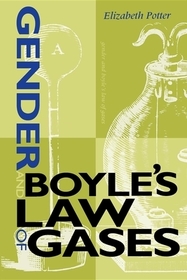
Gender and Boyle's Law of Gases
-
10% KEDVEZMÉNY?
- A kedvezmény csak az 'Értesítés a kedvenc témákról' hírlevelünk címzettjeinek rendeléseire érvényes.
- Kiadói listaár GBP 15.99
-
7 639 Ft (7 275 Ft + 5% áfa)
Az ár azért becsült, mert a rendelés pillanatában nem lehet pontosan tudni, hogy a beérkezéskor milyen lesz a forint árfolyama az adott termék eredeti devizájához képest. Ha a forint romlana, kissé többet, ha javulna, kissé kevesebbet kell majd fizetnie.
- Kedvezmény(ek) 10% (cc. 764 Ft off)
- Kedvezményes ár 6 875 Ft (6 548 Ft + 5% áfa)
Iratkozzon fel most és részesüljön kedvezőbb árainkból!
Feliratkozom
7 639 Ft

Beszerezhetőség
Megrendelésre a kiadó utánnyomja a könyvet. Rendelhető, de a szokásosnál kicsit lassabban érkezik meg.
Why don't you give exact delivery time?
A beszerzés időigényét az eddigi tapasztalatokra alapozva adjuk meg. Azért becsült, mert a terméket külföldről hozzuk be, így a kiadó kiszolgálásának pillanatnyi gyorsaságától is függ. A megadottnál gyorsabb és lassabb szállítás is elképzelhető, de mindent megteszünk, hogy Ön a lehető leghamarabb jusson hozzá a termékhez.
A termék adatai:
- Kiadó Indiana University Press
- Megjelenés dátuma 2001. április 22.
- Kötetek száma Print PDF
- ISBN 9780253214553
- Kötéstípus Puhakötés
- Terjedelem224 oldal
- Méret 229x152 mm
- Súly 308 g
- Nyelv angol
- Illusztrációk 5 figures, 1 index 0
Kategóriák
Hosszú leírás:
Boyle's Law, which describes the relation between the pressure and volume of a gas, was worked out by Robert Boyle in the mid-1600s. His experiments are still considered examples of good scientific work and continue to be studied along with their historical and intellectual contexts by philosophers, historians, and sociologists. Now there is controversy over whether Boyle's work was based only on experimental evidence or whether it was influenced by the politics and religious controversies of the time, including especially class and gender politics.
Elizabeth Potter argues that even good science is sometimes influenced by such issues, and she shows that the work leading to the Gas Law, while certainly based on physical evidence, was also shaped by class and gendered considerations. At issue were two descriptions of nature, each supporting radically different visions of class and gender arrangements. Boyle's Law rested on mechanistic principles, but Potter shows us an alternative law based on hylozooic principles (the belief that all matter is animated), whose adherents challenged social stability and the status quo in 17th-century England.
Tartalomjegyzék:
"
Contents
Introduction
Part I: The Intersection of Gender and Science: Now We See It. Now We Don't.
1. Now We See It
2. Now We Don't
Part II: Boyle's Work in Context
1. Economics, Politics and Religion: Stuart Conflicts With Parliament
2. Civil War Approaches
3. The Intersection of Class and Gender Politics
4. The Boyle Family's Religious and Class Politics
5. More Class and Gender Politics
6. Boyle's Gender Politics
7. Boyle's Background Reading
8. Boyle's Hermeticism, Magic and Active Principles
9. Hermeticism, Hylozooism and Radical Politics
10. Boyle's Concern Over the Sectaries
11. Boyle's Objections to Hylozooism
12. Experimental Support for the Corpuscular Philosophy
13. Boyle's Law of Gases
14. The Production of An Alternative Law
15. Methodological Considerations
16. ""The Data Alone Proved Boyle's Hypothesis""
17. Good Science
Conclusion




